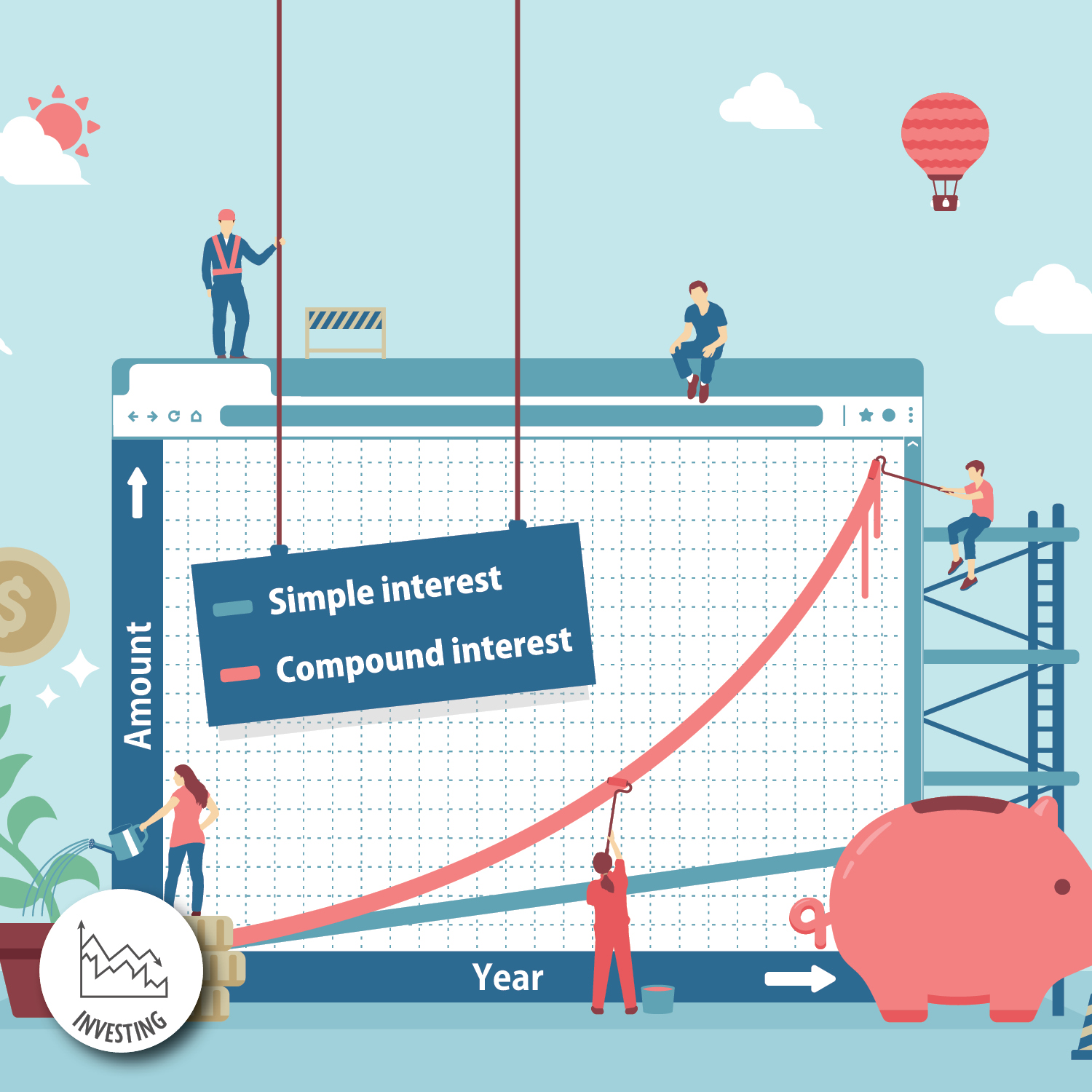What I Wish I Learned in School: Compound Interest

If there’s one financial concept that has the power to change lives – but remains underappreciated – it’s compound interest. This “eighth wonder of the world,” as Albert Einstein famously called it, could have been a game-changer for so many if they had been taught (and paid attention to it) early. But, for most of us, compound interest wasn’t covered in school, leaving us to stumble upon its magic later in life; perhaps too late to fully benefit. Here’s why understanding compound interest early could make all the difference.
What is compound interest?
At its core, compound interest is the process of earning interest on both the initial principal of an investment (your starting amount) and the accumulated interest over time. In other words, your money makes money, and that money also makes money. The result is, you guessed it, MORE MONEY. The concept is deceptively simple, but its potential to grow wealth is staggering when applied consistently over time.
An example of compound interest
Let’s break it down with an example:
Imagine you invest $1,000 at a 5% annual interest rate. If the interest is simple (NOT compounded), you earn $50 every year. After 10 years, you have $1,500. But, with compound interest, you earn interest on the $1,000 in year one, then on $1,050 in year two, and so on. After 10 years, your $1,000 grows to $1,628.89 — not because the rate is higher, but because of the compounding effect. Of course, the more you invest, the higher your interest rate and the longer you let your investment sit, the more compound interest your investment will earn.
Why timing matters
Compound interest thrives on a single crucial element: time. The earlier you start saving or investing, the more exponential the growth.
For example:
- Start investing $200 a month at age 25, with an annual return of 7%. By age 65, you’ll have nearly $480,000.
- Start the same plan at age 35, and by age 65, you’ll only have approximately $227,000.
Every year you delay an investment will cost you in potential returns.
Lessons on compound interest you wish you’d learned in school
Here are the most important principles of compound interest:
1. Start early, even with small amounts
Compound interest needs time to work its magic, and even a small amount of investing early in life could lead to significant returns over time.
2. The rule of 72
The Rule of 72 is a simple way to estimate how long it takes for your investment to double. Divide 72 by your annual interest rate, and you’ll get the number of years needed. For example, with a 6% return, your money doubles in 12 years (72 / 6 = 12). Learning this trick early can inspire better saving habits.
3. Compounding works for debt, too
The concept of compound interest is usually used to refer to its benefits, it can also work against you when it comes to debt. Credit card debt, for example, compounds at alarming rates, turning small balances into financial nightmares.
4. Harness the power of automation
Setting up automatic transfers to savings or investment accounts ensures consistent contributions and removes the temptation to spend.
Why understanding compound interest can be life-changing
Understanding the concept of compound interest can truly be life-altering. Here’s why:
- Increased financial freedom. Compound interest is the key to achieving financial independence. By saving and investing early, you can create a future where your money works for you instead of you working for money.
- Less stress in emergencies. A solid savings foundation means less financial stress when life throws curveballs at you. Compound interest grows your emergency fund faster than money stashed under the mattress ever could.
- Head start on retirement. Many adults only start saving for retirement in their 30s or 40s, missing out on years of growth.
- Building generational wealth. Compound interest doesn’t stop with one person. Teaching kids how to invest early sets the stage for generational wealth, where families pass on financial security and knowledge.
How to make up for lost time
If you didn’t learn about compound interest in school, it’s not too late to start harnessing its power. Here are a few steps to get going:
- Open a high-yield savings account or start investing. Look for accounts or investment platforms with competitive interest rates. Even small contributions add up over time.
- Take advantage of employer matching. If your employer offers a 401(k) match, contribute enough to get the full match; it’s essentially free money that compounds.
- Automate your savings. Set up recurring transfers to savings or investment accounts to ensure consistency.
- Educate yourself. Use free resources, apps and calculators to better understand how compounding works and how you can maximize it.
Compound interest is one of the most powerful financial tools, and it’s available to anyone. Unfortunately, its value is often underestimated or ignored, especially by young people. Learning to harness its unique power can make all the difference to your financial health.
